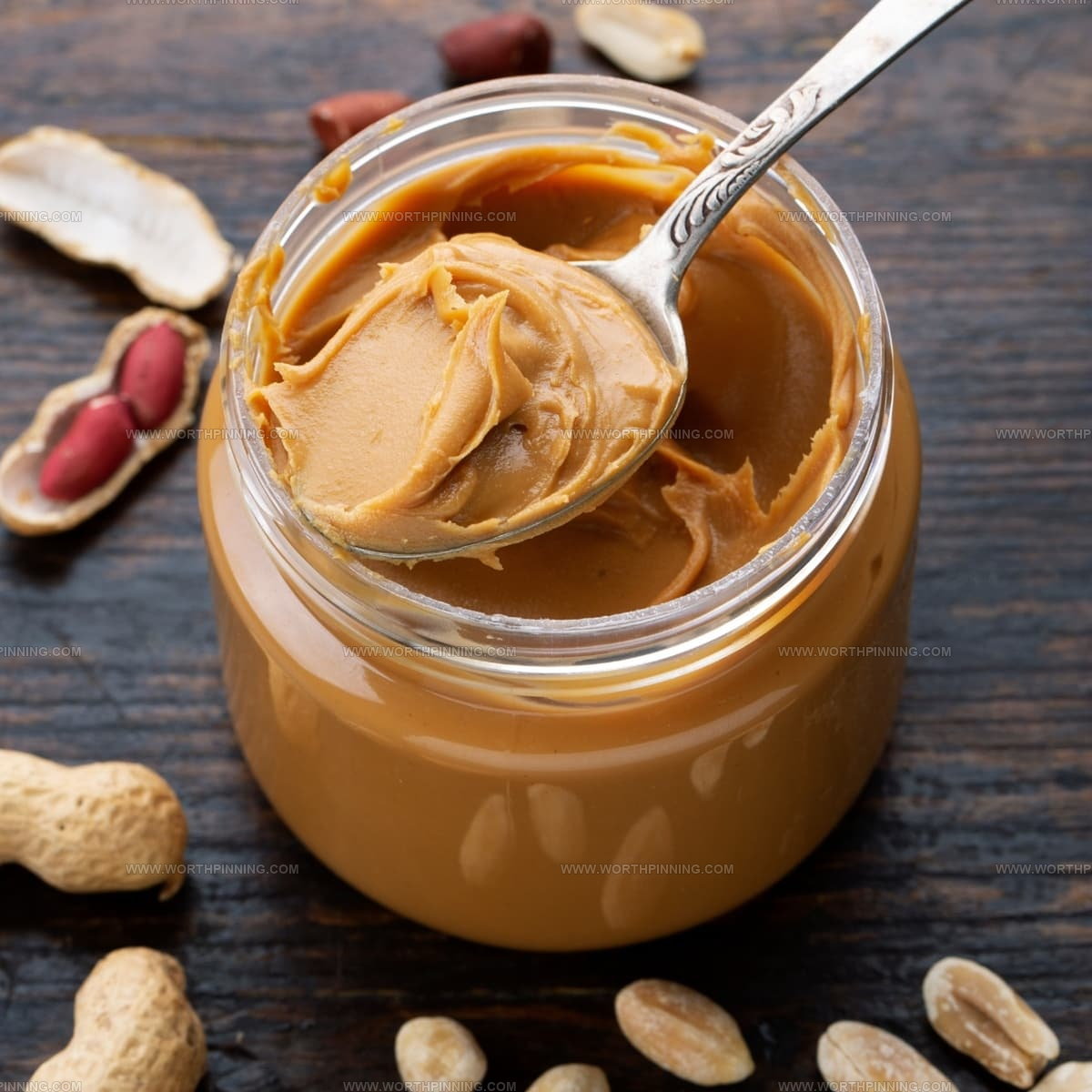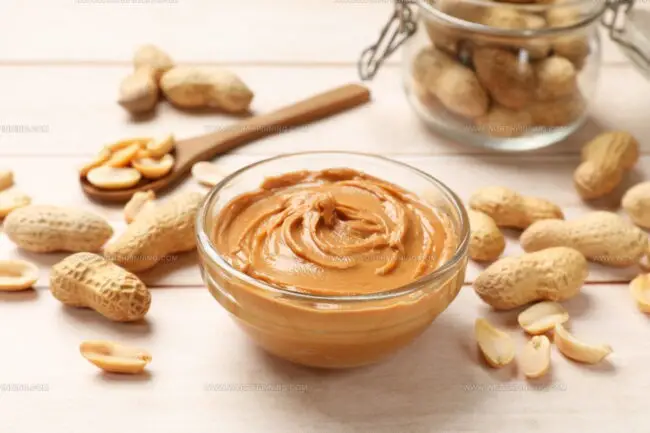15 Delicious Peanut Butter Alternatives for Every Diet
Peanut butter is beloved for its creamy texture and rich, nutty flavor, commonly used in baking, cooking, and spreads.
When peanut butter isn’t available, substitutes like almond butter, sunflower seed butter, or soy nut butter can offer similar consistency and taste.
For those with nut allergies, seed-based butters provide safe, delicious alternatives.
Some options also cater to dietary restrictions, including sugar-free or unsweetened versions.
These seventeen best peanut butter substitutes cover a range of flavors and nutritional profiles, perfect for every need.
Understanding these alternatives helps keep your recipes flavorful and inclusive.
Discover creative and allergy-friendly peanut butter replacements that fit any kitchen.
Choosing The Greatest Alternatives for Peanut Butter
Peanut butter adds nutty depth and richness. When you can’t use it, there are other ways to keep that satisfying flavor. The right alternative can still make your dish shine.
Almond Butter
Almond butter offers a delicious alternative to peanut butter with its mild flavor and creamy texture that many people enjoy.
This healthy option packs in essential nutrients like healthy fats, fiber, magnesium, and vitamin E to boost your daily nutrition.
People who watch their calorie intake appreciate that almond butter typically contains fewer calories than traditional peanut butter while delivering similar satisfaction.
Beyond simple sandwiches, this versatile spread works wonderfully as a base for salad dressings, sauces, or in your favorite baked goods.
Anyone with peanut allergies can safely enjoy almond butter since it comes from a different plant family altogether.
Cashew Butter
Cashew butter offers a delicious alternative to peanut butter with its creamy texture and slightly sweet flavor profile.
This spreadable delight combines ground cashews, oil, and salt for a simple yet nutritious option that many people enjoy on their favorite foods.
Health enthusiasts appreciate cashew butter for its impressive nutritional benefits, including high levels of monounsaturated fats and protein, while maintaining relatively low sugar and carbohydrate content.
Most grocery stores now carry cashew butter alongside other nut butter varieties, making it increasingly accessible for anyone looking to diversify their pantry staples.
From morning toast and crackers to oatmeal, smoothies, and fruit dips, this versatile spread can enhance numerous recipes throughout your day.
Walnut Butter
Walnut butter offers a fantastic substitute for peanut butter lovers looking to explore new flavors with impressive health benefits.
Rich in omega-3 fatty acids, antioxidants, and essential nutrients, this creamy spread delivers a distinctively nutty taste that works wonderfully in sandwiches, smoothies, and oatmeal.
The simple combination of ground walnuts, a touch of oil, and salt creates a versatile condiment that supports heart health while providing substantial protein and fiber for your daily diet.
You can easily spread it on toast, swirl it into yogurt, or use it as a nutritious dip for apple slices when afternoon hunger strikes.
Making your own at home requires just a food processor and fresh walnuts, allowing you to control the ingredients and avoid unnecessary additives found in commercial versions.
Hazelnut Butter
Hazelnut butter offers a tasty alternative to peanut butter, crafted from ground hazelnuts mixed with simple ingredients like oil and salt.
People with nut allergies often prefer it since it typically contains fewer allergens than many similar spreads.
The rich, nutty flavor pairs wonderfully with sweet treats such as sliced apples, bananas, or chocolate desserts.
This versatile spread can even serve as an excellent base for savory dips when combined with garlic, herbs, and a touch of lemon juice.
Pecan Butter
Pecan butter offers a delicious alternative to peanut butter with its mild, nutty flavor that comes from ground pecans mixed with oil and salt.
This tasty spread works wonderfully on toast and crackers, giving you a new breakfast or snack option whenever you want something different.
Many people enjoy adding it to their baking recipes, where it adds richness and depth to cookies, brownies, and other treats.
For a nutritional boost in the morning, try stirring some pecan butter into your oatmeal instead of your usual toppings.
The natural oils and proteins in pecan butter can help keep you satisfied longer than some other breakfast choices.
Brazil Nut Butter
Substitution in recipes opens up countless possibilities, especially when swapping Brazil nut butter for more common spreads like peanut or almond butter.
This creamy alternative, made from ground Brazil nuts with oil and salt, delivers a distinctive earthy flavor that works beautifully in both sweet and savory dishes.
Adding a spoonful to smoothies or yogurt bowls creates a nutritious boost packed with selenium and healthy fats that standard options can't match.
Many bakers have discovered that Brazil nut butter makes cookies and brownies taste uniquely rich without overpowering other ingredients.
Though less common on grocery shelves, this nutritional powerhouse deserves more attention from home cooks looking to expand their culinary horizons.
Pistachio Butter
Pistachio butter offers a delicious twist on traditional nut spreads with its distinctive nutty flavor and beautiful green hue.
Many food enthusiasts appreciate how this creamy spread combines ground pistachios with just oil and salt for a simple yet satisfying taste experience.
The versatility of pistachio butter shines in countless recipes, from morning toast and baked goods to savory sauces for pasta or chicken.
Health-conscious eaters value its impressive nutritional profile, packed with heart-healthy fats, protein, and essential vitamins.
Adding a spoonful to your smoothies, oatmeal, or yogurt can elevate an ordinary breakfast into something special without much effort.
Sunflower Seed Butter
Sunflower seed butter has gained tremendous popularity as a perfect alternative for people with peanut allergies or those simply looking to switch up their spreads.
The smooth, nutty paste combines roasted sunflower seeds with minimal ingredients like oil and salt, creating a delicious option that works wonderfully on toast, in smoothies, or as a dip base for fresh vegetables.
Many parents now pack sunflower butter sandwiches in school lunches due to widespread peanut restrictions, appreciating its similar protein content and creamy texture.
Kids typically enjoy its milder flavor profile, which lacks the strong taste that sometimes turns children away from other nut butters.
Making your own version at home requires just a food processor and about 15 minutes of patience while the seeds transform from crumbly to creamy.
Tahini
Tahini, a creamy paste made from ground sesame seeds, stands out as the most popular peanut butter substitute despite not being a nut butter at all.
Many people recognize its distinctive nutty flavor as the secret ingredient that gives hummus its characteristic taste.
This versatile spread works wonderfully in both savory and sweet recipes where peanut butter would typically be used.
Middle Eastern and Mediterranean cuisines have treasured tahini for centuries before it became trendy in Western cooking.
Tahini also offers a perfect solution for anyone with peanut allergies who still wants that rich, spreadable texture in their foods.
Soy Nut Butter
Soy nut butter offers a safe alternative for people with nut allergies while maintaining the familiar taste and texture of peanut butter.
Made from roasted soybeans ground with oil and salt, this spread packs plenty of protein and healthy fats into each serving.
Many fans appreciate how its slightly milder flavor works well in classic PB&J sandwiches or adds richness to baked goods like cookies.
The creamy consistency makes it just as spreadable as traditional nut butters, without any risk for those with peanut or tree nut sensitivities.
Children who can't enjoy regular peanut butter at school often find soy nut butter a welcome lunchbox solution that doesn't make them feel different from their classmates.
Coconut Butter
Coconut butter, a creamy spread made from ground coconut meat with added oil and salt, stands out as a delicious alternative to traditional nut butters despite not technically being one.
The rich tropical taste of this smooth blend makes it perfect for enhancing desserts with its natural sweetness and distinctive flavor profile.
Many people enjoy using it as a topping for toast, mixed into smoothies, or as an ingredient in homemade treats.
Health enthusiasts appreciate coconut butter for its medium-chain fatty acids that may provide quick energy for the body.
Some bakers even substitute it for regular butter in recipes when looking for a dairy-free option with a hint of island flair.
Chickpea Butter
Chickpea butter offers a nutritious alternative to traditional spreads with its simple blend of ground chickpeas, oil, and salt that packs in healthy fats and protein.
The added bonus of fiber helps keep hunger at bay between meals, making it an excellent choice for anyone watching their diet.
Spread it generously on toast or crackers for a quick snack that satisfies without guilt.
This versatile ingredient works wonderfully in baking recipes too, adding a distinctive nutty flavor to cookies, brownies, and muffins that your family won't expect.
For those with nut allergies or dietary restrictions, chickpea butter provides a safe and tasty option that doesn't compromise on texture or taste.
Granola Butter
Granola butter offers a delicious alternative for those who can't enjoy traditional peanut or nut butters due to allergies or dietary restrictions.
Similar to its nutty cousins in terms of nutrition, this less-known spread delivers a distinctive crunch and oat-based flavor that works wonderfully on toast, in smoothies, or drizzled over fruit.
Many health-conscious eaters appreciate its wholesome ingredients like oats, seeds, and natural sweeteners without the common allergens found in nut products.
Kids typically love its familiar granola taste, making lunchbox sandwiches both safe for school and tasty.
The versatility of granola butter extends to baking too, where it can replace nut butters in cookies, energy balls, and breakfast bars with minimal recipe adjustments.
Macadamia Nut Butter
Macadamia nut butter stands out as a luxurious alternative to traditional spreads with its incredibly rich, buttery flavor that many consider superior to other nut options.
This creamy treat packs a nutritional punch too, offering heart-healthy monounsaturated fats while serving as an excellent protein source for those following plant-based diets.
Bakers and home cooks love substituting it in recipes that call for peanut or almond butter, especially in cookies and brownies where it adds a subtle tropical note without overpowering other ingredients.
Spreading it on warm toast creates a simple breakfast that feels genuinely special, and a spoonful added to morning oatmeal transforms the ordinary into something memorable.
For an easy appetizer that will impress dinner guests, try mixing it with a touch of honey and serving alongside apple slices or crackers.
Powdered Peanut Butter
Powdered peanut butter has emerged as a versatile and convenient alternative to traditional peanut butter, created by removing most of the oil content from roasted peanuts and grinding them into a fine powder.
This lower-fat option contains about 85% less fat than regular peanut butter while maintaining that delicious peanut flavor we all love.
Many health-conscious people choose powdered peanut butter because it delivers protein and taste without the extra calories from oils.
The powder blends seamlessly into smoothies, oatmeal, yogurt, and protein shakes, making breakfast options more exciting.
You also appreciate how easily it incorporates into cookies, muffins, and pancake batters for a subtle peanut kick without changing the texture of their treats.
How Do Peanut Butter Alternatives Behave Under Heat, in Emulsions, or in Doughs?
Peanut butter alternatives - such as almond butter, cashew butter, sunflower seed butter, or soy nut butter - can behave differently from traditional peanut butter depending on their composition and fat content. Here’s what to expect in various culinary contexts:
Adjusting ratios and combining with other fats or liquids can help achieve desired textures when substituting peanut butter.
Mistakes to Avoid When Replacing Peanut Butter
Peanut butter adds creaminess, flavor, and richness to many recipes. Replacing it can work, but the wrong choice might change the taste, texture, or nutrition:
Peanut Butter Swap Questions Answered
1. Can I use regular butter in place of peanut butter?
Only partially. Butter lacks the protein and nutty flavor of peanut butter, so pair it with a small amount of nut flour or crushed nuts for balance.
2. What’s a good low-fat alternative to peanut butter?
Powdered peanut butter mixed with water or mashed bananas can provide flavor and moisture with fewer calories and fat.
3. Can I replace peanut butter with cream cheese?
Yes, in some recipes. Cream cheese offers creaminess and tang, but you may need extra sweetener in desserts to balance the flavor.
4. Are there sweet spreads that work as peanut butter replacements?
Yes. Cookie butter, chocolate hazelnut spread, or honey-almond spread can be used for a sweeter profile in baked goods or snacks.
5. How do I substitute peanut butter in savory recipes?
Almond butter or cashew butter blends smoothly into sauces and dressings. If using tahini, add a bit of honey or sugar to round out bitterness.
6. Will peanut butter substitutes change the texture?
Slightly. Some nut butters are runnier, while seed butters can be thicker. Stir well before measuring to ensure accuracy.
7. Can I mix different substitutes to mimic peanut butter?
Yes. Combining almond butter with a bit of sunflower seed butter or tahini can give a more balanced flavor and texture.



Sophia Rivera
Recipe Developer & Kitchen Tips Specialist
Expertise
Education
Austin Community College
San Antonio Culinary Institute
Sophia’s passion for baking began in her family kitchen, where she spent hours experimenting with new recipes. With a background in baking and pastry arts, she loves making desserts that are as visually stunning as they are delicious.
Sophia is all about using seasonal, locally sourced ingredients to create treats that everyone will enjoy. When she’s not creating mouth-watering desserts, you can find her gardening, making new recipes, or enjoying a relaxing afternoon with her family.